Navigating ACTIVATE
This page introduces the major features of ACTIVATE to help new users get oriented.
Home
When you log in to ACTIVATE, you’ll see the Home page by default.
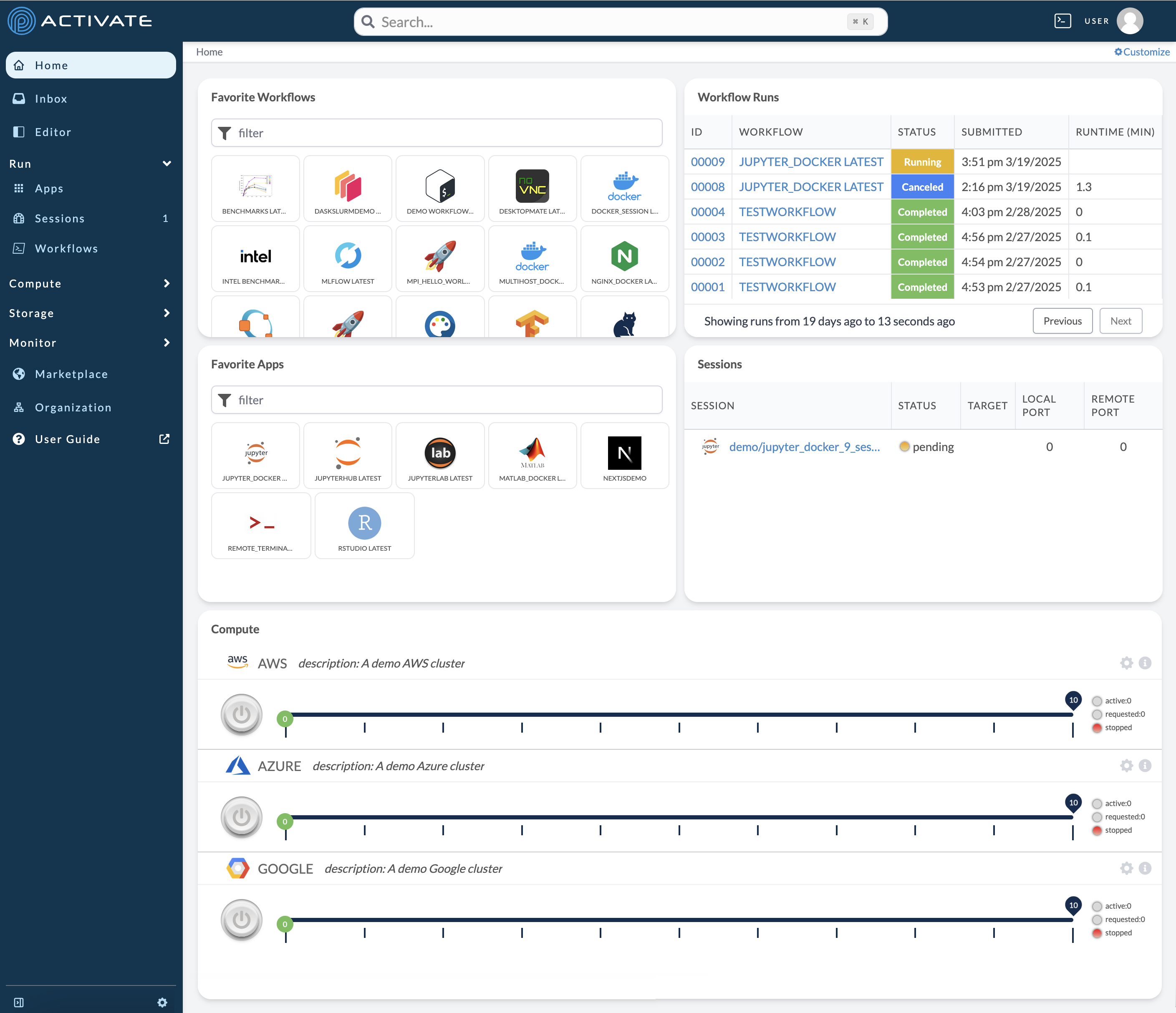
The Home page serves as your primary activity monitor on ACTIVATE. You can select your favorited workflows, adjust resource requirements, and view past run results from this page.
There are five default modules on this page:
- In Favorite Workflows, you can click a workflow to run or configure it.
- In Workflow Runs, you can track current and past workflow runs, cancel runs, and run workflows again.
- In Favorite Apps, you can run an app directly from the Home page.
- In Sessions, you can monitor active workflow and app sessions.
- In Compute, you can start/stop or configure clusters you've favorited. Click a resource's name to collapse it.
In addition to the Home page, you'll regularly interact with:
- the Editor
- the Inbox
- the Run pages
- the Compute pages
- the Storage pages
- the Monitor pages
- the Marketplace
- the User menu
If you want to customize the Home page or your sidebar, you can follow the instructions in Customizing Layouts.
Inbox
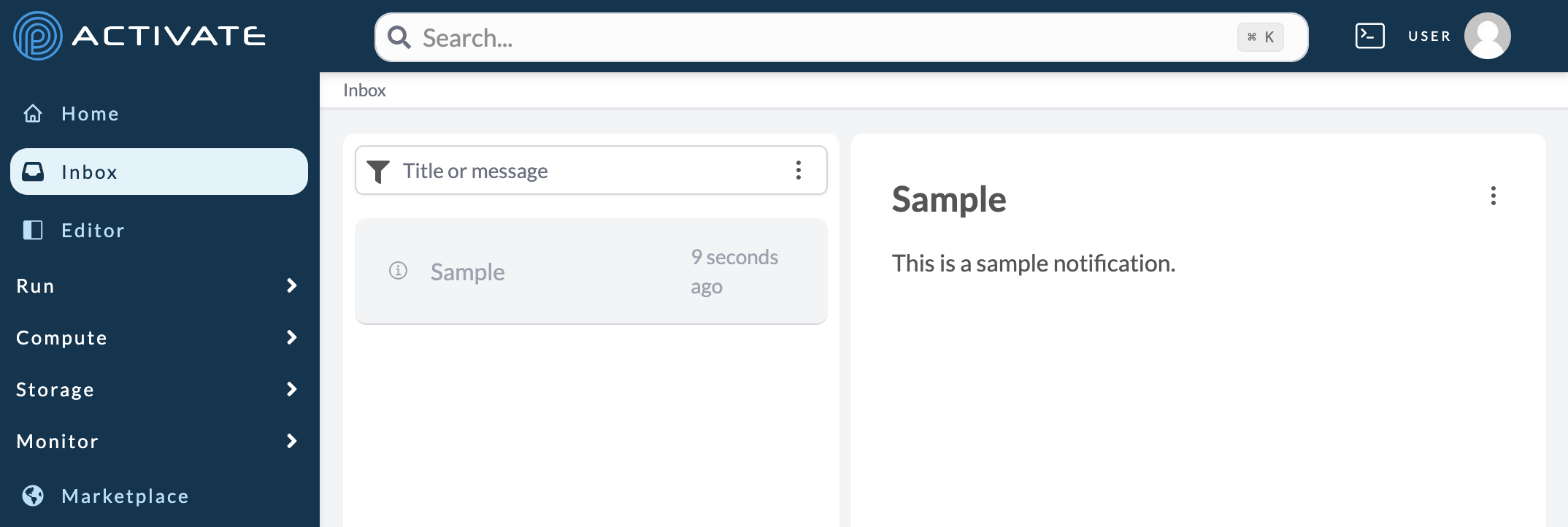
In your Inbox, you can see notifications for your clusters and workflows. ACTIVATE administrators can also send messages to users.
Editor
In the Editor, you can access your user workspace, also called the integrated development environment (IDE).
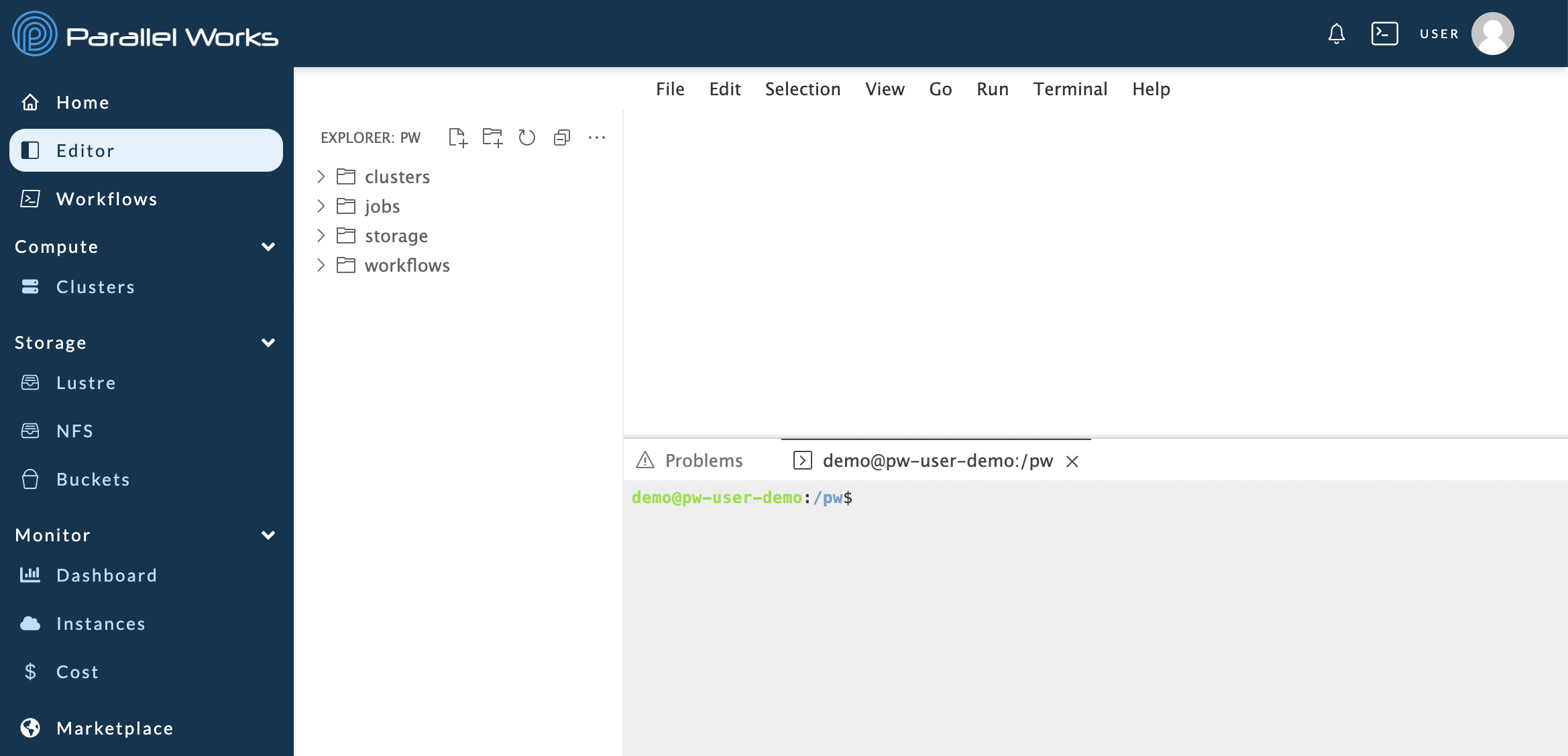
The IDE is a powerful tool, allowing you to view job output and error files, run code, and debug workflows. Our IDE is based on Theia. When you use a terminal in the IDE, it runs commands much like Terminal on macOS or Command Prompt on Windows.
Run
The Run tab houses the pages for different options to complete work on ACTIVATE.
Workflows
On the Workflows page, you can create and manage your workflows. Any workflows you add from the Marketplace will appear here automatically.
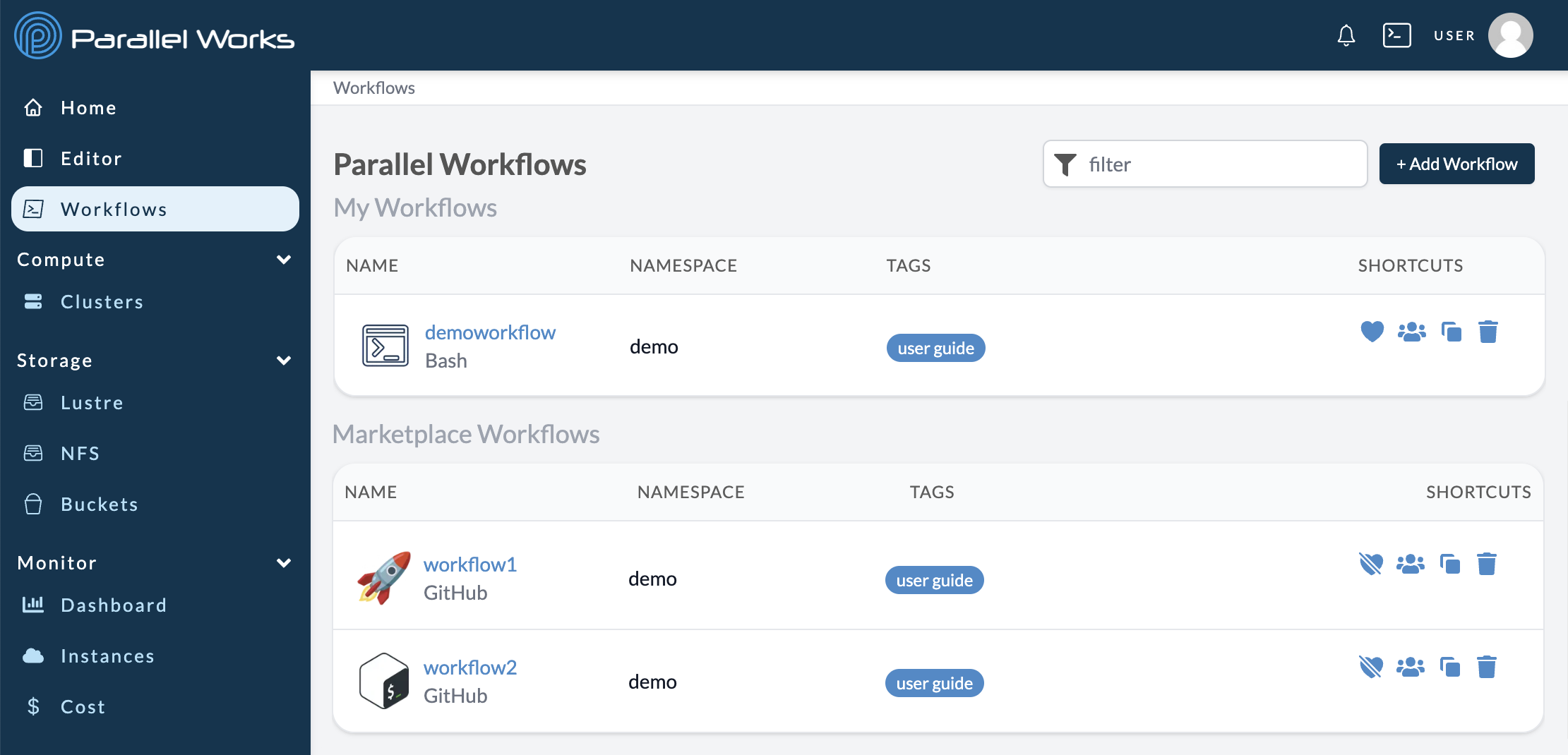
For more information, please see About Workflows.
Apps
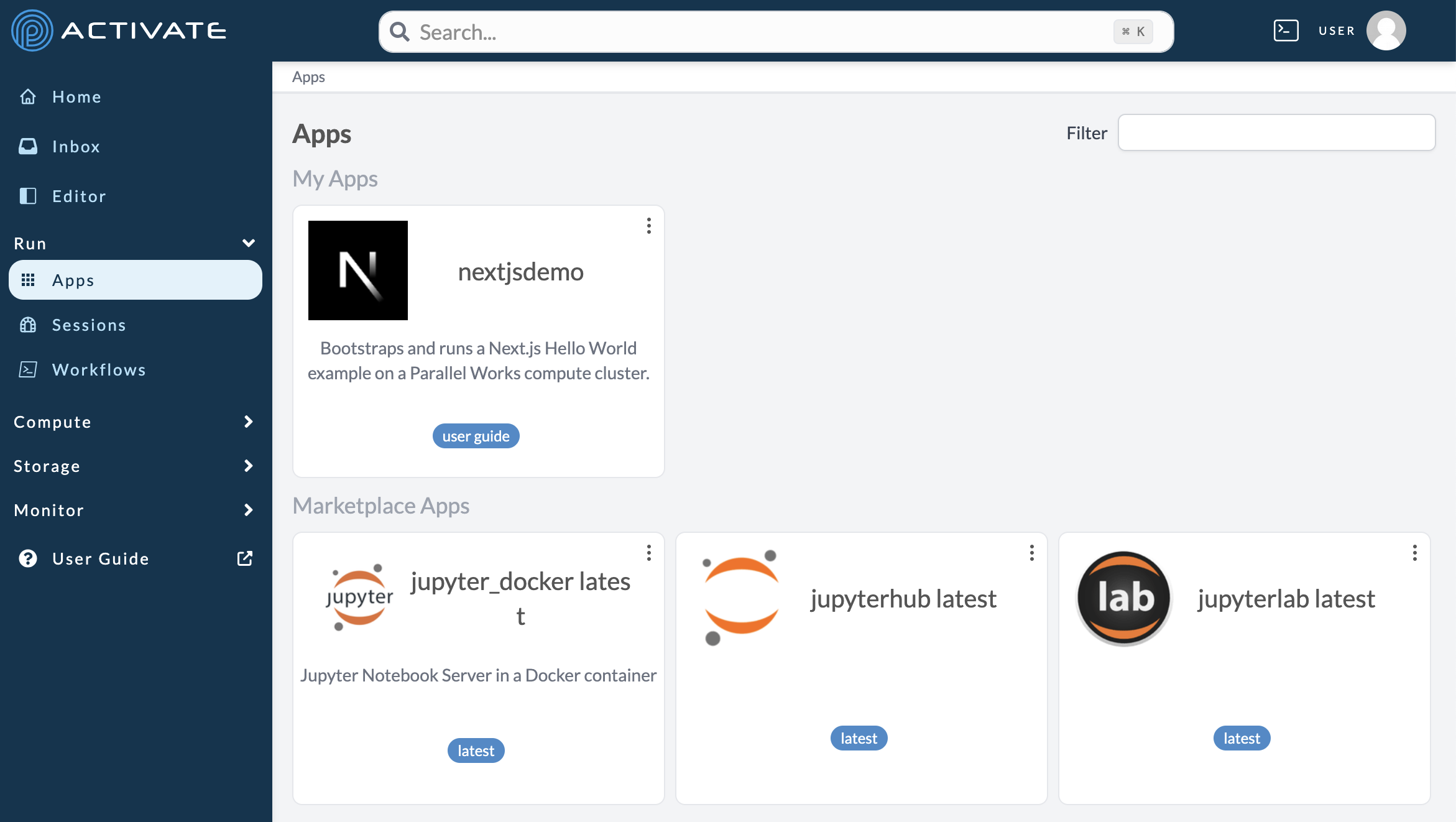
On the Apps page, you can run and manage your apps. Apps are a type of workflow that can be started with one click.
For more information, please see About Apps.
Sessions

On the Sessions page, you can access running sessions. A session is a secure, shareable connection between a cluster and a workflow or app. Sessions can also generate interactive applications.
For more information, please see About Sessions.
Compute
The Compute tab houses the pages for different computing resources.
Clusters
On the Clusters page, you can create and manage clusters as well as access any shared clusters.
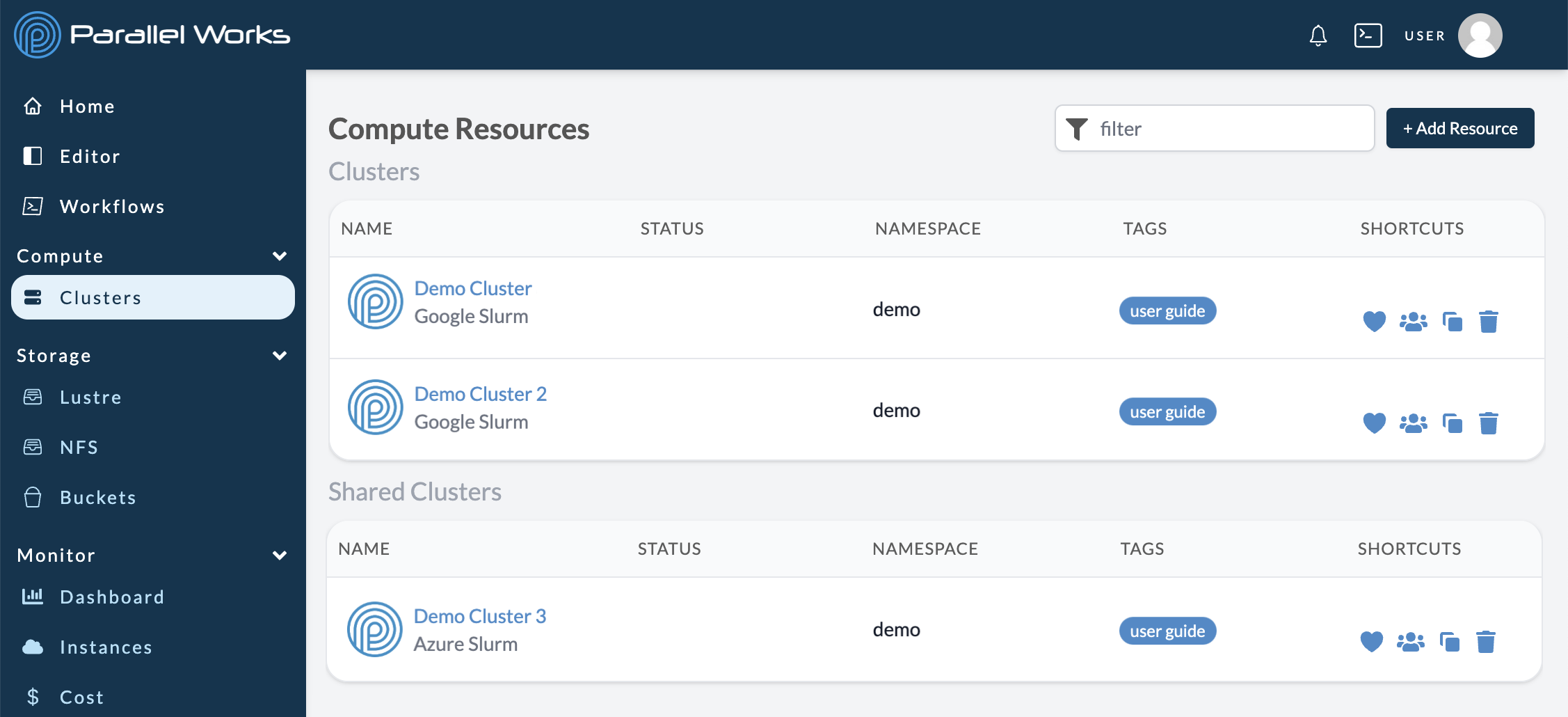
For more information on adding and configuring new resources, please see Creating Clusters and Configuring Clusters.
Storage
The Storage tab houses the pages for different storage types: Lustre, NFS, Disks, Buckets, and Snapshots. For more information about these options, please see Storage.
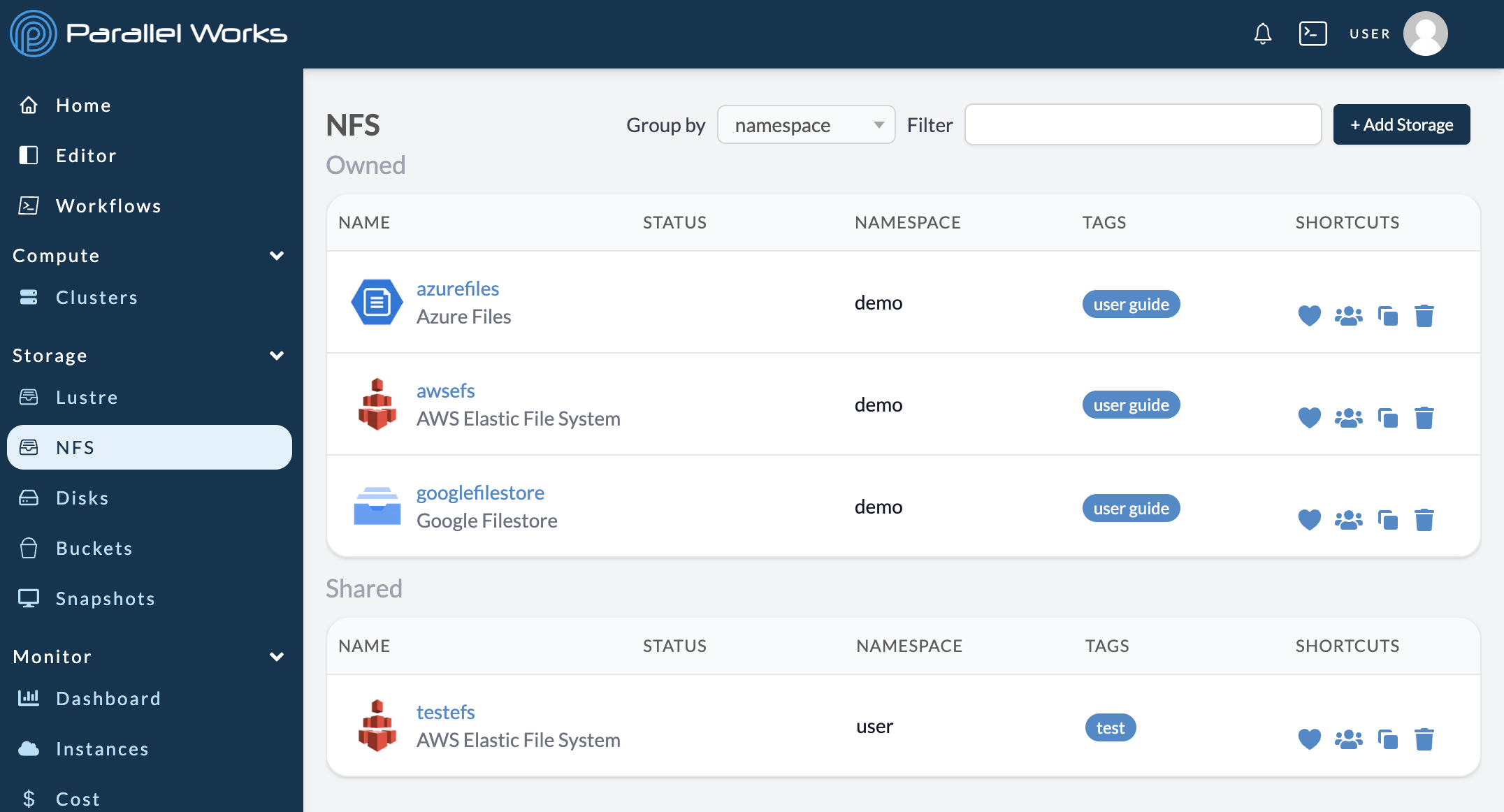
Monitor
The Monitor tab houses pages that show important information about your resources and ACTIVATE platform usage.
Cost
The Cost page displays cost tracking information for your organization, such as total spend over time and allocation usage.

For more information, please see Monitoring Costs.
Instances
The Instances page displays any running clusters and clusters that have been deleted within the last hour. For more information, please see Instances in Monitoring Your Work.

Marketplace
On the Marketplace page, you can select pre-configured workflows, storage resources, and compute resources for your projects.
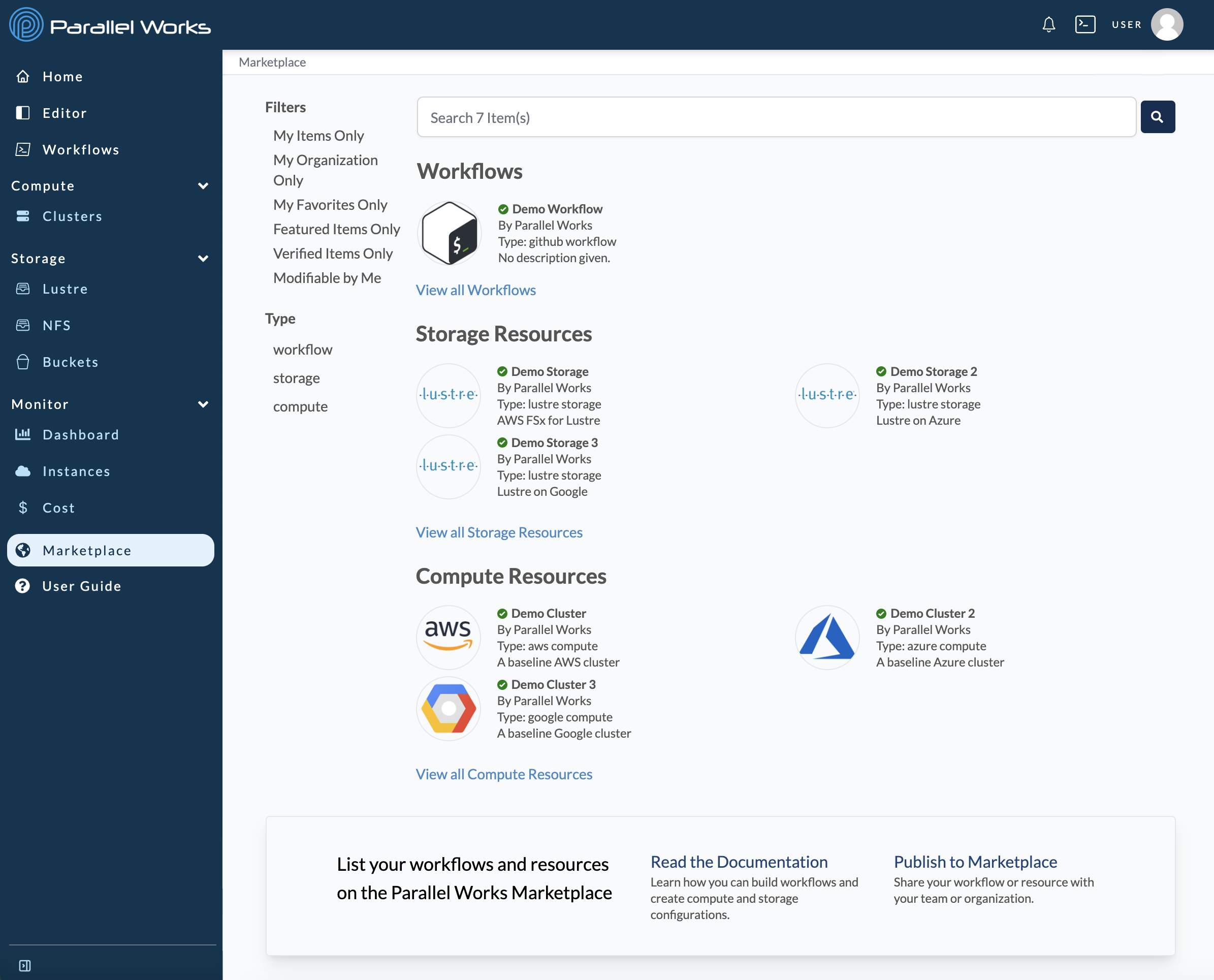
For more information, please see Navigating the Marketplace.
Terminal
With this feature, you can generate a pop-up terminal that can be used while you navigate around ACTIVATE.
Click the terminal icon at the top of your screen.
![]()
A terminal will appear at the bottom of your screen.

You'll see the terminal until you click its icon again to close it.
Feature Preview
With the Feature Preview, you can test upcoming features before they're integrated into ACTIVATE.
Click your username, then select Feature Preview.

A new dialog box will appear with a list of features. Select a feature, then click Enable.

Enabled features will display a green checkmark next to their names.
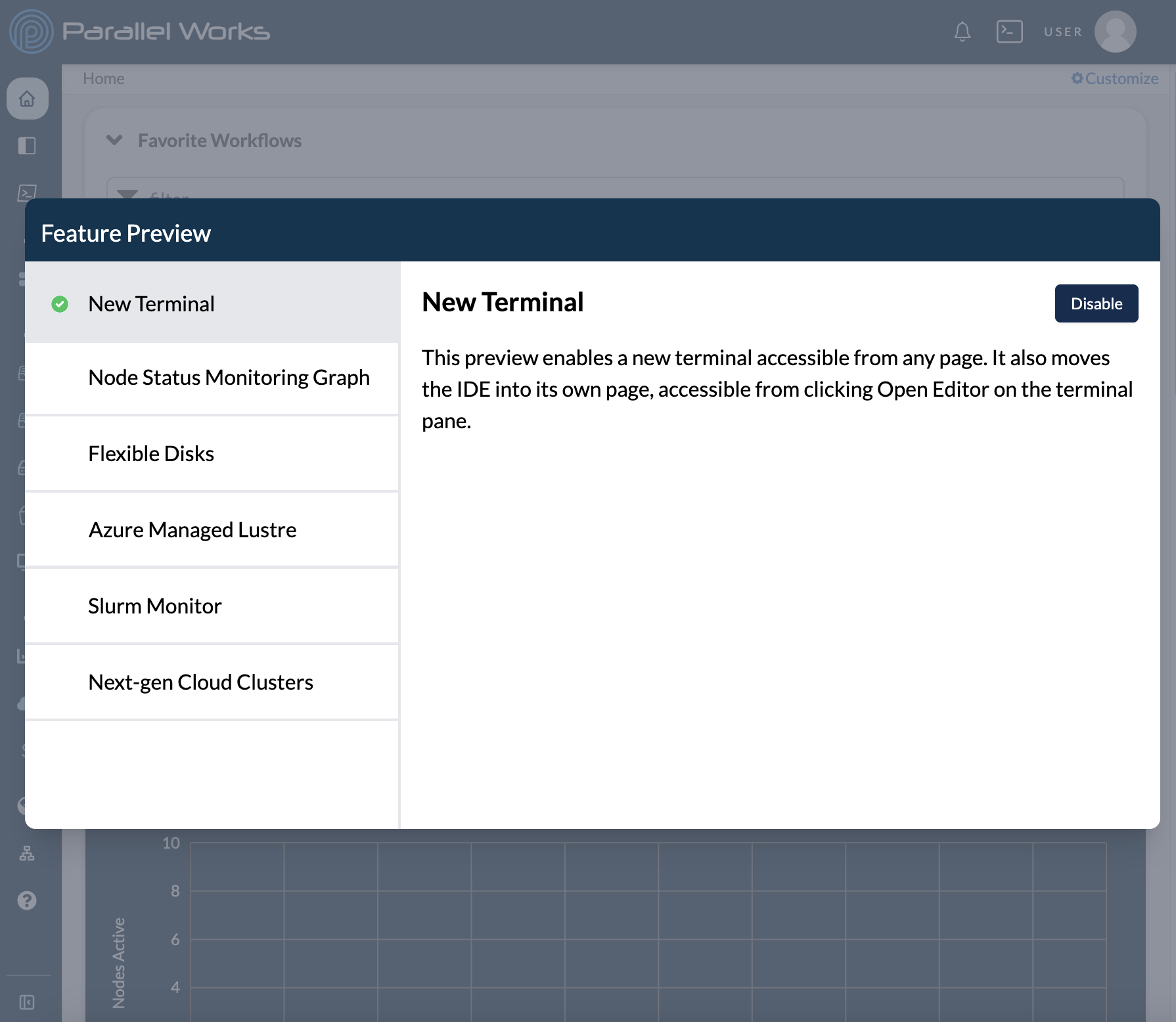
You can remove features at any time by clicking Disable.
Please note that the items listed in the Feature Preview are controlled by your organization's administrator.